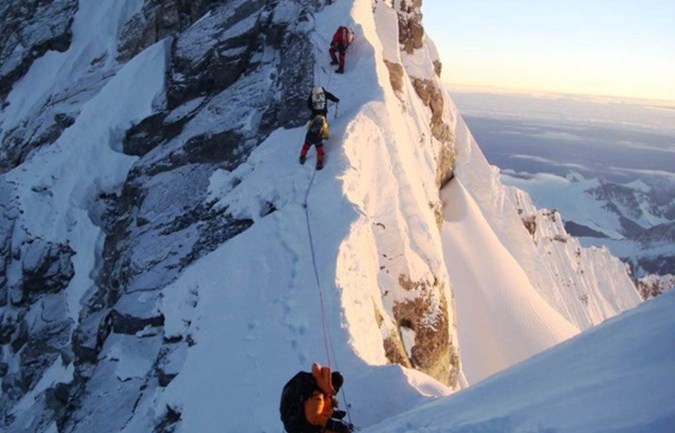Commercialization of Everest climb and the environmental havoc
In Nepal, Everest climb has become a money-making venture that has compromised people’s safety and has led to the deterioration of the ecosystem.
Hundreds and hundreds of mountaineers come together every year to climb the magnificent Mount Everest, which, as known by all, is the tallest mountain that bestrides between Nepal and Tibet. In the recent past, though the number of climbers has considerably increased, out of the many people who reach the summit of Everest, only half of them succeed.

Almost two-thirds climbers mount the Everest from Nepal, while the rest from Tibet. Though climbing from Nepal is more popular, the death rate is relatively higher on this side. According to the recent report by The Himalayan Database, the Nepal side has recorded 181 deaths out of 5280 summits. Whereas, the Tibet side has 3206 summits out of which there were 107 deaths. Though the trend of mountain climbing is rising, the risk and difficulties involved, has not reduced. Climbers every year die from either the subfreezing temperatures or when out of supplementary oxygen at such high altitudes. By the time they reach a particular altitude, their physical strength deteriorates and they begin to lose their sense of judgment. While many die getting caught in a sudden storm, falls and avalanches, for others, crowd at the Everest is a major reason to be worried about.
Hence, a lot is at stake as the climb as death can be an impending reality for many.
Despite hiring practiced tour guides, using cutting edge technology, and abiding by weather forecasts, the number of deaths are on the rise. The reason could be due to the commercialization of Everest climb, as climbing in Nepal has now become a money-making operation for the government, the profit-oriented guides and ego and ambition-ridden climbers.
“The government must consider shutting access to Everest for cleaning purpose, but
they seem to be adamant about not taking any action”
Lack of an efficient solid waste management, deforestation due to lodges’construction and heating, erosion of mountain paths and contamination of water has highly alarmed the environmentalists. Due to the pressure, the government of Nepal and Everest expedition organizer has taken the initiative of a clean-up operation. Sherpas and other climbers have been given 10 canvas bags, each capable of containing 80kg waste. Once the bag is full, with the help of helicopters, the waste is to be brought down the mountain. Along with this step, increase in permit fees, fewer climbers on each team, establishing of local search and rescue team and proper investment in environmental clean-up programs can contribute significantly in the making of a cleaner Everest. Nevertheless, one cannot help but notice how even the magnificent mountain itself is getting highly affected by the increase in the number of mountaineers. Global climate change has affected Everest as some of its glaciers have retreated immensely. If the ice continues melting, it could endanger the Sherpas (the locals) who are already dealing with frequent flooding. Despite several clean-up efforts, Everest is far from being called clean. The rubbish found, mostly consists of used oxygen cylinders, food items, tents, human waste and even corpses. The government must consider shutting access to Everest for cleaning purpose, but they seem to be adamant about not taking any action. Perhaps, they too cannot be completely blamed because tourism to Everest is a reliable source of income for an economically backward country like Nepal.
The government is passing legislation in order to guard and protect the Everest but nevertheless, the question of its implementation comes to the forefront. Mere passing of policies will not help until these policies are monitored and properly enforced. The government along with the locals and climbers must be committed towards the goal of a cleaner Everest because if these ecological issues, are not dealt with effectively and immediately, might lead to the deterioration of one of world’s most unique ecosystem.
